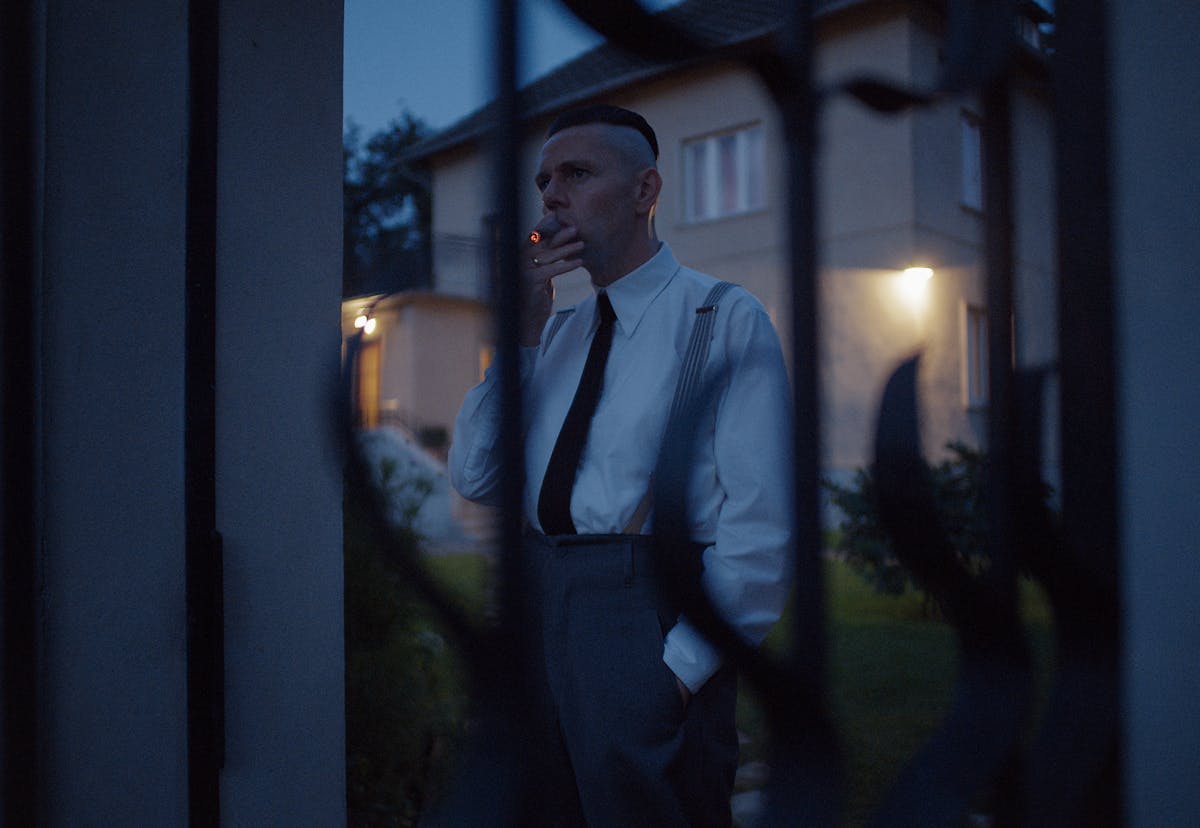In ‘The Zone of Interest,’ Auschwitz Is the Neighbor From Hell
A new film from A24 probes what it means to strive for domestic bliss next door to history’s greatest crime scene.

“The Zone of Interest,” written and directed by Jonathan Glazer and loosely based on a novel of the same name by Martin Amis, begins as a lakeside idyll. It does not end that way. Its subject is the Höss family — Rudolph, Hedwig, their five children, and a dog. They live in a stucco villa, and are devoted to horticulture. Their neighbor, though, is Auschwitz, Rudolph is the commandant, and he can walk to work.
The film is a study in foreground and background, taken to extremes. We never see what happens inside Auschwitz, a complex of death and slave labor where more than one million people were murdered — the majority of them gassed on arrival — during the Holocaust. The movie’s title, interessengebiet in German, refers to the 40 square kilometer area immediately surrounding the camp. That is where “Zone,” from A24, is set.
Auschwitz, though, is never silent. Screams, gunshots, and wailing serve as the movie’s macabre melody. Mass murder is not a demure business, and survivors of this camp and others report on the constant din. The wall of Auschwitz, topped with curlicues of barbed wire beyond which rises watchtowers and busy chimneys, is a leitmotif. Höss’s boots need to be clean because they drip with blood. Handkerchiefs are always handy, for the stench.
If Hannah Arendt’s phrase “the banality of evil” took on celluloid form, it would look like “Zone.” The movie patiently, meticulously, and unnervingly records the pleasures and pressures of hearth and home adjacent to the largest crime scene in human history. A family kayak outing comes to an abrupt end when a chunk of human bone bubbles to the water’s surface. Bits of ash get scrubbed off in the sink.
While Höss, played by Christian Friedel, is a study in diabolical diligence, it is Hedwig, played by the great Sandra Hüller, who is the film’s dark center. In an astonishing passage, she refuses to leave her home at Auschwitz, even when her husband is transferred. Her rage is stoked not by the crematoria, but by the possibility that the Reichsführer, Heinrich Himmler, could evict her from living beside them. For her and the children, it is a quality of life issue.
The Hösses get to stay in their bougainvillea bedecked home when word comes from Berlin of a new project that only Auschwitz can manage — the extermination of Hungarian Jewry in the spring and summer of 1944. New tracks must be laid, fresh platforms built. Obersturmbannführer Adolph Eichmann has the plans, and Höss is honored to execute them. He will do his work with such diligence that the entire enterprise will become known as Aktion Höss.
The scenes that wound are often modest. Hedwig admires herself in the mirror wearing a luscious fur coat that could only have come from “Canada,” as the repository at Auschwitz of goods stolen from Europe’s Jews is called. There is a stick of lipstick in the pocket, which Hedwig layers on her lips. It’s blood red, of course. When a servant incurs her displeasure, she tells the terrified girl that one more misstep and she will be turned to scattered ash.
Hedwig crows about being called the “Queen of Auschwitz,” but a visit from her mother ends infelicitously when admiration for her daughter’s comfortable circumstances gives way to distaste that her daughter lives among corpses. She wonders if an old neighbor of hers, Esther Silberman, might be at Auschwitz, and regrets that she was outbid for her curtains before she was deported. “The Jews are on the other side of the wall,” Hedwig explains.
While most of the film is shot with a studied naturalism, there are moments where Mr. Glazer loosens the reins. A montage of zoomed-in shots of flowers is gorgeous and gross, the flora seemingly corrupted by the predations of the nearby fauna. Another remarkable sequence unspools something like a fairy tale, shot with thermal imaging technology. It adds a dose of surreality to a rural hellscape roofed by a leaden Polish sky.
“Zone” arrives in theaters with a headwind of acclaim. It won the Grand Prix at the Cannes Film Festival, and it will represent Great Britain in the Best International Feature Film category at the Academy Awards in February. Others will find in its mundanity a failure of imagination and a surfeit of indulgence. Mr. Glazer, somewhat incongruously, imagines it as “‘Big Brother’ in the Nazi house.” Its debts are to documentary and reality television both.
Rudolph Höss was hanged at Auschwitz in 1947, after having been convicted at the Nuremberg trials. Hedwig, though, made her way to America, where she lived to the age of 90. Unlike Amis, Mr. Glazer, for all of his auteur credentials, does not depict the killing zones themselves, save for contemporary footage of the crematoria being cleaned. Some will see in this reticence a failure. Others, in the age of murderers wearing GoPros, will experience it as a relief.
________
This article has been corrected from the bulldog to reflect that the director’s name is Jonathan Glazer.

